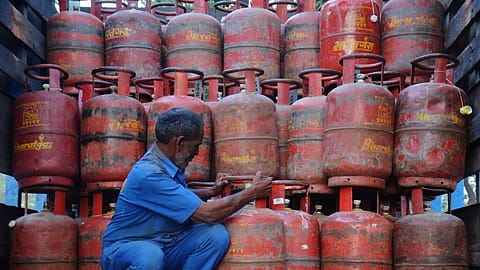Will LPG subsidy burden hurt OMCs profitability in H2 FY25?
The LPG subsidy requirement for OMCs – IOCL, BPCL, and HPCL - is expected to reach ₹40,000 crore in FY25, according to a YES Securities report.

For decades, the LPG subsidy has long been a cornerstone of the government’s efforts to provide affordable cooking gas to households, particularly to rural and economically weaker sections. Under this system, three major state-owned oil marketing companies (OMCs) – Indian Oil Corporation (IOCL), Bharat Petroleum Corporation (BPCL) and Hindustan Petroleum Corporation (HPCL), are reimbursed for a portion of the subsidy cost, with the government covering the rest. The central government provides a subsidy of ₹300 per 14.2 kg LPG cylinder to eligible beneficiaries for up to 12 refills per year under the Pradhan Mantri Ujjwala Yojana (PMUY).
However, in recent years, in the backdrop of rising global energy prices and higher domestic consumption, the LPG subsidy burden has emerged as a significant issue for OMCs who sustained an impact of ₹17,490 crore in the first half of the current fiscal (H1FY25) that dented their profitability in the absence of government support, according to a latest report by YES Securities.
In the absence of government support as yet, the actual subsidy requirement for FY25 is expected to reach ₹40,000 crore. In the first half of the current fiscal, OMCs profitability was impacted by LPG subsidy of ₹17,490 crore, which is expected to rise further to ₹22,500 crore in the second half of the fiscal (H2FY25), the report noted.
Assuming a distribution of the subsidy burden across IOCL, BPCL, and HPCL in the ratio of 49%, 25%, 26%, the respective impacts on these companies could be ₹19,570 crore, ₹10,200 crore, and ₹10,240 crore for FY25 (H1FY25 burden stood at ₹8,870 crore, ₹4,120 crore and ₹4,500 crore, respectively). As of now, there is yet no clarity from the government on the earmarked volume of petroleum subsidy.
“As per our scenario analysis, if government provides 60% of the shortfall, the FY25 EBITDA could significantly surpass consensus estimates. Even in the event of a worst-case scenario of zero government aid, the robust H2FY25 performance driven by strong GRMs and healthy marketing margins could help offset the said impact,” says Harshraj Aggarwal, lead analyst, YES Securities.
In base case scenario, if the government provides 60% of the requirement, OMCs would need to absorb the remaining ₹16,000 crore. Consequently, FY25 EBITDA will be ₹41,320 crore for IOCL, ₹28,680 crore for BPCL, and ₹20,720 crore for HPCL, significantly above Bloomberg consensus of ₹40,460 crore, ₹24,360 crore, ₹14,940 crore, respectively.
However, if the government provides 80% (₹32,000 crore) of the shortfall, the OMCs will have to bear ₹8,000 crore resulting in FY25 EBITDA of ₹45,240 crore for IOCL, ₹30,710 crore for BPCL, and ₹22,770 crore for HPCL, warranting an upward revision in estimates.
Recommended Stories
In bear case scenario, if the OMCs get ‘NIL’ support from the government, they will need to bear ₹40,000 crore, resulting in FY25 EBITDA of ₹29,590 crore for IOCL, ₹22,540 crore for BPCL, and ₹14,580 crore for HPCL, indicating a downward revision in estimates for IOCL, while keeping other two at par.
Analyst at YES Securities peg that OMCs are likely to make the most of a buoyant H2FY25 to report better performance than their last 5-year averages. “We believe HPCL and BPCL could outperform expectations based on our H2 calculations. In a worst-case scenario, of no government support, HPCL and BPCL could report EBITDA as per the consensus expectations, but we foresee a 40% sharing by OMCs which would revise HPCL and BPCL EBITDAs upwards by 39%/18% respectively. We stay bullish on OMCs but prefer HPCL and BPCL over IOCL, given its limited upside potential,” says Aggarwal.
(DISCLAIMER: The views and opinions expressed by investment experts on fortuneindia.com are either their own or of their organisations, but not necessarily that of fortuneindia.com and its editorial team. Readers are advised to consult certified experts before taking investment decisions.)